The Ultimate Color Guide for Pale and Fair Olive Skin

Key Takeaways
- Fair olive skin is light with a slight green or gray undertone, that can appear neutral initially. Calling it warm or cool just makes makeup and clothes come out sallow or ashy.
- Try your undertone in natural light, not vein tests or tanning ability. The olive undertone sticks around all year even if your surface color gets deeper.
- Pick up the green base with complementary colors like earthy tones, jewel tones, muted pastels and neutrals like taupe, mushroom, charcoal and soft ivory. Stay away from bright white, neon colors and intense yellow-based tones which can bring out sallowness.
- Create a makeup routine that accentuates, not covers up, your undertone. Search for foundations marked neutral olive, swatch on your jawline in daylight and prefer blush in muted rose or dusty mauve with light, well-blended application.
- Choose lip and hair colors that even out the undertone. Experiment with berry or brick red lipsticks and hair colors such as rich chocolate, mushroom blonde or cool espresso with ash highlights.
- Guard and glamorize your glow with everyday SPF, moisture and stylized decisions. Tell your experiences to the rest of us, to discover the best products for olive undertones!
🎨 Discover Your Personal Color Palette
Ready to discover your perfect color palette? Use our expert analysis to identify the colors that make you look and feel your absolute best. From skin undertones to feature matching, find your ideal color combinations.
Find Your Color Palette →Fair olive skin is a light complexion with warm green-gold undertones in the range between pale beige and soft tan. In photos, it can read muted or a bit sallow under cool light — but glow under warm daylight.
Typical characteristics are veins that swing blue-green and an inherent affinity for gold jewelry. To steer shade matching, sun care and makeup picks, the following sections demystify undertone tests, SPF needs and color selections that work all year long.
📚 Recent Articles
Unmasking fair olive skin
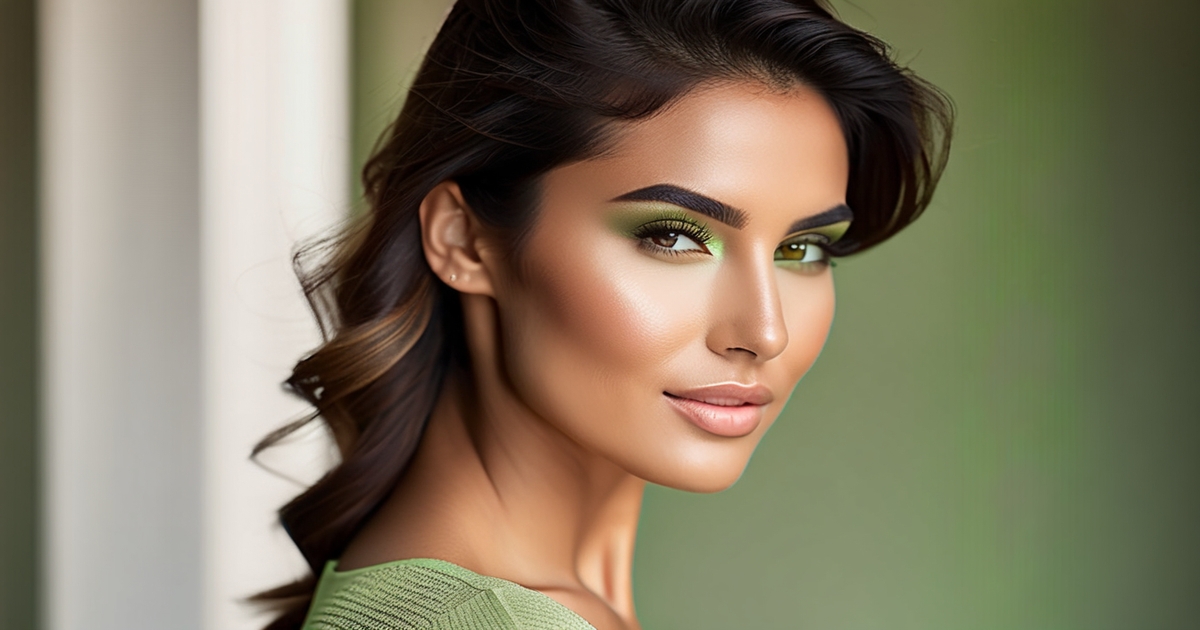
Fair olive skin is a unique complexion characterized by a pale **olive skin tone** with a subdued green or gray undertone, distinguishing it from traditional fair or beige shades. This light olive skin can appear neutral initially, yet become sallow or ashen with the wrong colors. Most can't find a foundation match because most fair shades are pink or yellow, not aligned with olive tones or blue-green hues.
1. The green undertone
Olive peeks through as a gentle green or gray wash beneath, occasionally with a chilly trace of blue. It can sit adjacent to fair olive skin, but still throw a faint olive-ish shadow that you see in images or alongside actual neutral complexion.
This undertone transforms the way color reads. Peach blush can appear loud. Warm gold can get brassy. Cool jewel tones—emerald, sapphire, amethyst—often look crisp and healthy, while cool-edged neutrals tend to flatter.
Inspect in clear, indirect daylight. Put your face up to a pink-toned girl, or a white sheet, next to your jaw and expose yourself to the sun. If your skin looks a shade too greenish by comparison, that's your hint. Vein tests aren't reliable; veins can appear greenish or olive mixed, which only further contributes to confusion.
2. Beyond tan
Olive skin, even fair olive, may tan quick and burn less, but the sun sinks color only on the surface. The olive undertone remains.
Don't assume 'tans well' = warm. It doesn't. Tanning ability and surface depth don't determine undertone. Even the very palest skin can be olive, including those who look very light in winter.
3. Common misconceptions
Fair olive skin frequently is called warm or cool because it masquerades as both in various lights. Olive is a unique neutral—not classic beige or peach.
Warm-yellow or pink-cool foundations will leave your face looking orange, gray or flat. That's many fair olive users say every 'fair neutral' skews too pink. Some have a cooler olive with a subtle blue cast, which makes matches even trickier.
Seek out olive-specific ranges, mixers with green or gray adjusters, or brands that specifically list 'olive' undertones. A pro color match or meticulous self-testing assists.
4. The sun's effect
The sun tans the surface but doesn't replace the undertone. Practice daily broad-spectrum SPF 30+ protection despite easy tans, as fair olive can still be UV-sensitive.
Anticipate seasonal changes—lighter in winter, darker in summer—therefore rotate foundation shade but maintain undertone. Monitor how your skin responds and adjust base, bronzer and blush accordingly.
5. Global heritage
Olive undertones span Mediterranean, Middle Eastern, South Asian, Latinx and certain East and Southeast Asian groups, and even touch down on some Eastern European lines. FAIR OLIVE can be anything from very fair to deep.
It might appear fair but still come off a tad green. Embrace its breadth: jewel tones, cool-leaning neutrals, and thoughtful shade matches can make fair olive look clear, bright, and alive.
The ideal color palette
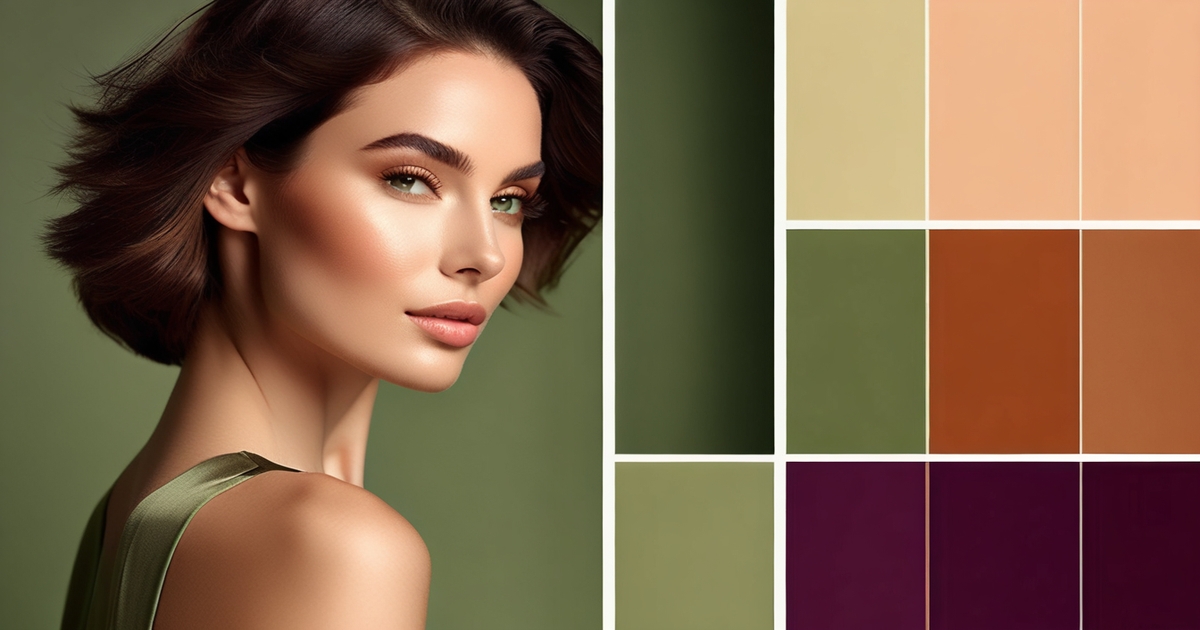
Fair olive skin frequently receives a faint greenish cast beneath a light ferrule. The idea is to mimic that undertone, without skewing it toward yellow or sallow. Love hues with cool or neutral bases with soft warmth in, and avoid vivid yellow or orange notes.
See fast picks below.
| Category | Best shades | Why it works | Use in |
|---|---|---|---|
| Earthy | olive, sage, terracotta-rose, warm cocoa | harmonize with olive undertone without extra yellow | knits, bronzer, lip tints |
| Jewel | emerald, sapphire, ruby, amethyst, deep teal | crisp contrast, lifts muted olive | dresses, scarves, eye looks |
| Pastels | dusty lavender, soft sage, powder blue, muted peach-pink | soft cool base, no neon cast | shirts, nails, blush |
| Neutrals | taupe, mushroom, charcoal, soft ivory, soft navy | stable base, avoids wash-out | coats, suits, base makeup |
Bright Cool and Light palettes flatter a lot of pale olive skinned women. If hair and eyes are very dark, then Bright Cool and Deep often appears more powerful. The common thread: balance warmth while toning down the yellow‑green cast.
Earthy hues
Lean into olive, sage, rose-tilted terracotta and warm browns like cocoa or chestnut. These hues echo the undertones of olive skin and create a serene, monochromatic ensemble that looks effortlessly chic.
Watch undertone. Rust, orange, and pumpkin all have a tendency to kick up the yellow/green, so the face can look sallow. If you heart heat, choose brick with blue-red, or a terracotta that skewed pink more than orange.
If you're wearing clothes and makeup, use earthy tones. A sage shirt, cocoa liner and soft brown brow gel provide an earthy foundation. Throw on a terracotta‑rose lip to pull it all together.
Jewel tones
Emerald, sapphire, amethyst, ruby and deep teal all provide nice crisp contrast that makes fair olive really pop. The richness awakens muted tones without competing.
Use jewel tones for statement pieces: a sapphire dress, an emerald scarf, or bold teal shadow. Balance them with taupe or soft ivory so the skin remains the star.
Muted pastels
Dusty lavender, soft sage and powder blue sit quietly against that greenish hue and look elegant.
Forget bright or neon pastels. They can clash with olive and yellow the skin. Combine washed-out pastels with darker anchors—cotton twill navy pants, a mushroom blazer—for a nuanced, contemporary vibe.
Try pastel makeup with care: lavender eyelids, sage liner, or a powder‑blue nail for a cool edge.
The right neutrals
1. Taupe: gray-brown with a cool base; perfect for pants, bags, and contour without orange.
2. Mushroom: soft, earthy gray; ideal for knits and eyeshadow creases that don't pull yellow.
3. Charcoal grey: sharp and deep; suits, liner, and outerwear that frame the face.
4. Soft ivory: creamy off‑white, brightens without the harsh glare of stark white or yellow beige.
Build your kit around them. Stay clear of yellow-based beige or true white, which washes out olive skin tones and boosts green/yellow tones.
Colors to approach cautiously
Fair olive skin tones are warm but exhibit a cool, subtle green cast, making it crucial to choose colors wisely to avoid clashing. It's essential to focus on moderation when selecting shades that will lift the skin rather than exacerbate any yellow or green undertones. When in doubt, test colors in natural light, ideally near a window around noon, and compare 2 or 3 swatches side by side. Taking a quick photo with your phone can also help, as the camera often captures subtle changes that the eye might overlook.
Vibrant hues can be particularly dangerous for those with light olive skin. Neons—such as lime, highlighter yellow, electric orange, and hot pink—can wash out fair olive skin, making it appear flat or overly green. If you have a fondness for these tones, it's best to keep them to small accents, like a thin stripe on sneakers, a slim belt, nail polish, or a small bag, rather than incorporating them into a full dress or bold lip look.
Yellow-based tones are often where the most drama arises for those with an **olive complexion**. Shades like mustard, peach, and other heavy yellow notes can draw out sallowness, while rust, orange, and pumpkin can enhance the skin's yellow or green undertones. Additionally, pale peach or coral can nudge the complexion toward a ruddy appearance. Yellow-based beige and khaki can dull your natural tone, especially in dimmer indoor lighting.
If you want neutral, try stone, mushroom gray, soft navy or blue-based charcoal instead of khaki or camel. Greens require caution as well. Olive green as well as warm, murky greens can bring out the olive undertone and sallow the skin. Ditto for drab earth browns with yellow bases.
If green is part of your style, look for cooler or clearer versions: spruce, forest with a blue base, teal leaning blue, or emerald with more jewel depth. These provide contrast rather than mirroring the undertone. Pastels tend to wash out fair olive skin, particularly icy pastels such as baby blue, mint and powder pink. They can sap warmth and leave a grayish tinge.
If you want a soft shade, pick a slightly deeper or creamier version: dusty rose instead of pale pink, cornflower instead of icy blue, or sage leaning neutral rather than mint. Be wary of soft, dusty hues as a rule, because on bright olive flesh they can appear fatigued. Pair with a crisp anchor—white shirt, navy blazer or clean denim—to sharpen the look.
Before you commit, check color on fabric or makeup in natural light and then step into shade and indoors. If it mutes or intensifies green, tone it down to accents or pass.
Makeup for a natural glow
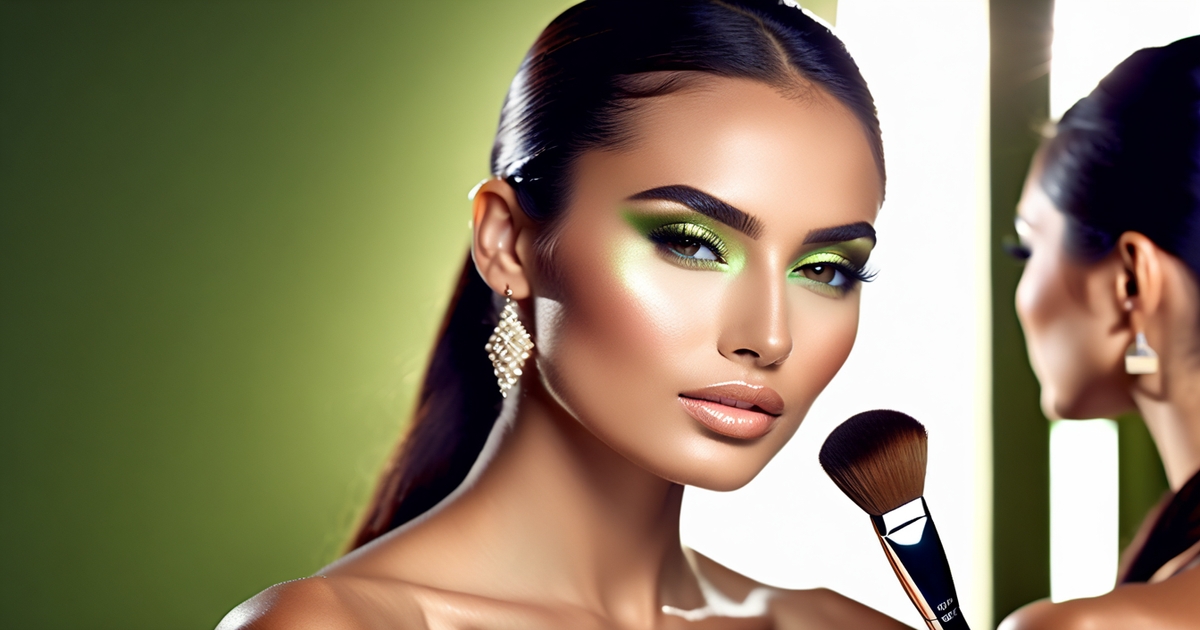
On fair olive skin, natural glow comes from shade choices that mimic the skin's own olive green-golden base, not mask it. Go for neutral-to-green undertones in every major item, layer lightly and let the finish be dewy, not dense.
Seasonal shifts matter: skin often looks richer in summer and softer in winter, so adjust depth accordingly.
Foundation matching
Most mainstream foundations run too pink, too yellow or even orange on olive skin and can therefore cancel the green-golden equilibrium. Search for tags that read neutral olive, olive-neutral, or soft green undertone.
If that's uncommon, seek something neutral with a subtle yellow or golden lean, and stay away from warm hues that lean tangerine. Swatch 3 to 5 across your jaw line, one deeper than you believe you are, then go check yourself out in natural light.
Wait a few minutes and see if it oxidizes — this helps an almost-right shade become muddy. Find the one that fades into your neck without a trace.
Dot on with a damp beauty sponge for a sheer, even veil. Set the T-zone with translucent powder to hold tone true through the day.
| Brand | Range | Olive-friendly tags | Notes |
|---|---|---|---|
| NARS | Light Reflecting | Punjab/Deauville (neutral), Stromboli (olive) | Watch oxidation; test in daylight |
| Estée Lauder | Double Wear | 2W2 Rattan, 3W1 Tawny | Many run yellow; pick neutral-leaning |
| Makeup Forever | HD Skin | 2Y20, 2Y22, 2N22 | Good neutral options, light layers |
| Kosas | Revealer | 160 N, 170 O | O shades skew olive-golden |
Blush choices
Muted rose, dusty mauve and soft apricot read like a real flush on fair olive skin. Bright pinks or punchy corals often hover up top and shout.
Cream or satin finishes impart slip and light, allowing the skin to appear fresh rather than matte. Some olive tones battle with standard pink and peach choices, so trial on bare skin initially.
Tap a small amount on the outer apples, then blend back toward the ear. With edges soft so you don't pull any greenish or ashen cast up. When in doubt, sheer it out and second pass.
Lipstick shades
Orange-based reds can look too harsh and very cool pinks can drain the face. Rich jewel tones always sing on olive, giving depth and a clean glow.
Experiment with matte and satin. Matte can be elegant. Satins are vivacious and effortlessly wearable day to night.
- Berry
- Muted rose
- Brick red
- Soft brownish nude
Complementary hair colors
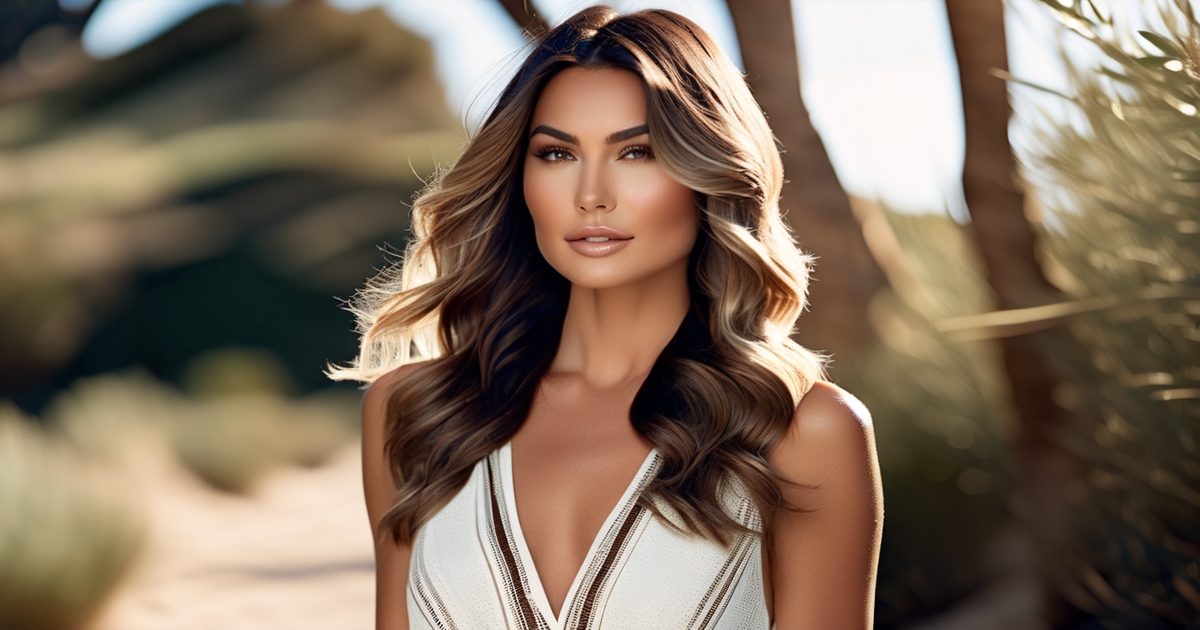
Fair olive skin, characterized by its unique complexion with a green-beige base, shifts with light, making it essential for hair color to balance the warm undertones while adding crisp contrast or gentle complement.
Suggest hair colors like rich chocolate brown, mushroom blonde, and cool espresso to harmonize with olive undertones.
Rich chocolate brown brings out depth without casting orange tones on the skin. It looks polished in both shade and sun, and it complements the natural warmth in olive skin without leaning orange. Mushroom blonde, a gentle blend of beige and ash, counters the green foundation and maintains radiance in the vicinity of the face. It's the 'safe' path if you desire a lighter look that doesn't have gold.
Cool espresso provides sharp contrast. Its subtle ash undertone prevents the shade from dragging red, making the skin look fresh and even. If you dig ultra dark hair, move into the realm of blue-black or inky brown — that dash of blue undertone can sophisticate olive skin and accentuate eyes.
Advise avoiding overly warm or golden shades, which can clash with the greenish base of olive skin.
Bright gold, honey or yellow blondes will battle the green cast and turn the skin unhealthy looking sallow. Neutral beige tends to look flat and wash out olive tones, so it often requires ash or deeper lowlights to keep the complexion from fading.
That being said, some warmth still plays. Warm brown families—light mocha, soft toffee, and lighter brown with gentle golden notes—can complement the skin's natural warmth, especially on olive tones that lean warm. Caramel, with its golden undertones, complements olive brown complexions when used as face framing ribbons instead of full-head color.
Copper, a ginger-inflected shade, can appear vibrant and bracing on warm olive skin, but must be tempered with cooler lowlights to prevent an orange hue.
Recommend incorporating subtle highlights in ash or cool tones for added dimension.
Dimension is essential for fair olive skin as one flat tone can mute the face. Dust ash brown, smoky beige or pearl highlights 1-2 levels lighter than the base to lift the look without brassy tones. Blue-black lowlights can sharpen dark bases and chill redness.
For those going gray or silver, lean into it: gray can create a striking contrast that sharpens eyes and bone structure. Mix in soft charcoal lowlights to maintain depth near the roots and prevent the tone from appearing stark.
Encourage consulting a professional colorist familiar with olive skin tones for optimal results.
A good colorist will test to see if your olive skin skews warm or cool; that decision directs the entire strategy. They're able to blend custom ash to neutralize brass, deposit caramel or copper where the face needs warmth and select developers that lighten without yellowing.
Request a strand test in natural light, talk maintenance in weeks, not months, and collaborate on a toner schedule to maintain the cool edge in between visits.
The lifestyle connection
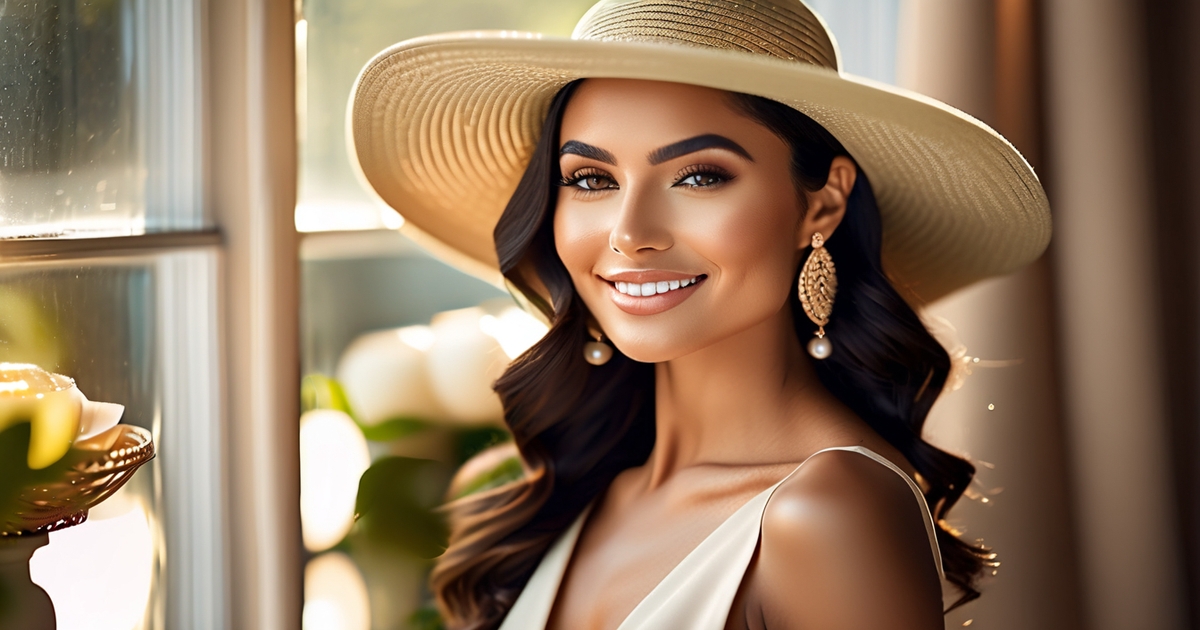
Fair olive skin occupies a crossroads of tone and heritage — commonly associated with Mediterranean genes and hybrid lineages that include Italian, Spanish, and even indigenous backgrounds. This fusion can manifest itself in a fair ground with a subdued green tint, a hue that changes with seasons, and elements such as under eye shadows that appear darker on lighter **olive complexions**.
Because a consistent lifestyle routine keeps your skin calm year-round.
Skincare routines that fit fair olive skin
Hydrate first. Apply a light glycerin or hyaluronic acid gel or lotion morning and night to prevent thin, frequently taut winter skin from appearing grey-green. Throw on a barrier cream in super dry air.
Sun care is non-negotiable: use SPF 30+ daily, even indoors by windows, since UVA passes through glass and can cause spots that stand out on olive tones. Reapply if you're outside.
In summer, when most of us pale olive types develop a bronzed glow, switch to non-comedogenic formulas and introduce antioxidants such as vitamin C to combat dullness and uneven tone.
In winter, when that greenish paleness and dark bags can show more, use a gentle retinaldehyde or bakuchiol at night to support cell turnover without harsh peel. Cold spoons or caffeine eye gel can assist those under eye shadows.
Patch test acids, olive skin can look sallow if exfoliation is too strong. Shoot for mild lactic acid 1-2 times a week.
Wardrobe and makeup that honor the undertone
Clothes that echo the muted base tend to work well: soft navy, charcoal, olive, warm tan, and deep burgundy. Stark black or neon can suck the life out of your face in winter, so try off-black or rich brown instead.
For makeup, it's undertone that counts. Most fair olive skins have difficulty with shades that are too pink or too peach. You might require blending two foundations, a neutral or golden plus a dash of olive, to suit year-round.
In winter, a neutral-olive match with sheer coverage keeps the look true. In summer, go one shade deeper to follow the bronze glow. Correct under-eyes with a thin olive-peach corrector, then a light neutral concealer.
Blush in muted rose, terracotta, or tawny apricot reads organic. Bronzer is olive-leaning, not orange! Gold or khaki eye tones flatter through the seasons.
Confidence, daily life, and community
There is ancestry in fair olive skin—Mediterranean, blended heritage handed down over generations—that can be a silent blessing. Welcome the transition of seasons and use it as your signal to adjust care and color.
Share what works: the SPF that does not leave a cast, the two‑shade foundation mix, the winter routine that stops the greenish tint. Exchange photos, notes, and shade lists with squad mates online to construct a living guide that makes others feel seen.
Conclusion
Fair olive skin is a silent equilibrium. Cool and warm. Mellow and light. With the right shades, that balance glows.
To construct your daily schedule, simplify. Rely on soft blue, cool pink, pine and sand. Skip jarring neons. Try a single shade. A light foundation, translucent rouge, and well-shaped eyebrow outline the face. On the hair, ash brown, cool black or soft espresso appear crisp and clean. A juicy lip like berry or brick adds pop without clash. Little swaps pile up quickly.
Tried a friend icy silver hoops over gold) Her skin appeared refreshed in one swipe. Experiment with shifts like that.
Have a question or need shade picks by season? Leave a note and we'll figure it out.
Frequently Asked Questions
How do I know if I have fair olive skin?
Seek a fair olive skin with greenish or golden undertones, not pink. Those with light olive skin tones may notice their veins appearing green. Silver jewelry can look alright, but gold often complements warm undertones better. You can tan a little but still burn, so neutral-to-warm foundations suit best.
Which clothing colors flatter fair olive skin?
Try soft warm colors like sage, camel, and warm beige to complement light olive skin tones. Deep jewel tones such as emerald and sapphire also enhance your unique complexion beautifully.
Which colors should I avoid if I'm fair olive?
Avoid neon shades, icy pastels, and ultra cool grays, as they can make light olive skin tones appear sallow. Instead, surround your olive complexion with warmer makeup or accessories to enhance your natural beauty.
What makeup base works best for fair olive skin?
Opt for foundations with neutral-warm or olive undertones, especially for light olive skin tones. Steer clear of pink-based formulas and choose sheer to medium coverage to maintain your unique complexion. Set lightly with translucent powder to avoid dullness, testing in daylight on the jawline.
Which blush and lip colors look natural on fair olive skin?
Opt for warm peaches, apricot, dusty coral, and terracotta to complement light olive skin tones. For lips, try peachy nudes, warm rose, or brick shades, while avoiding cool blue-pinks that may appear ashy.
What hair colors complement fair olive skin?
Warm brunettes with light olive skin tones, such as chestnut or chocolate, along with soft black and golden highlights, flatter beautifully. Copper and warm auburn tones will pop, while very ashy blondes may look flat.
Does lifestyle affect how fair olive skin looks?
Yes. A little hydration, a little sun protection, and gentle exfoliation help maintain her light olive skin tone beautifully. Regularly applying SPF 50 wards off sallow tones, while consuming antioxidants promotes purity and cultivates a glowing radiance.